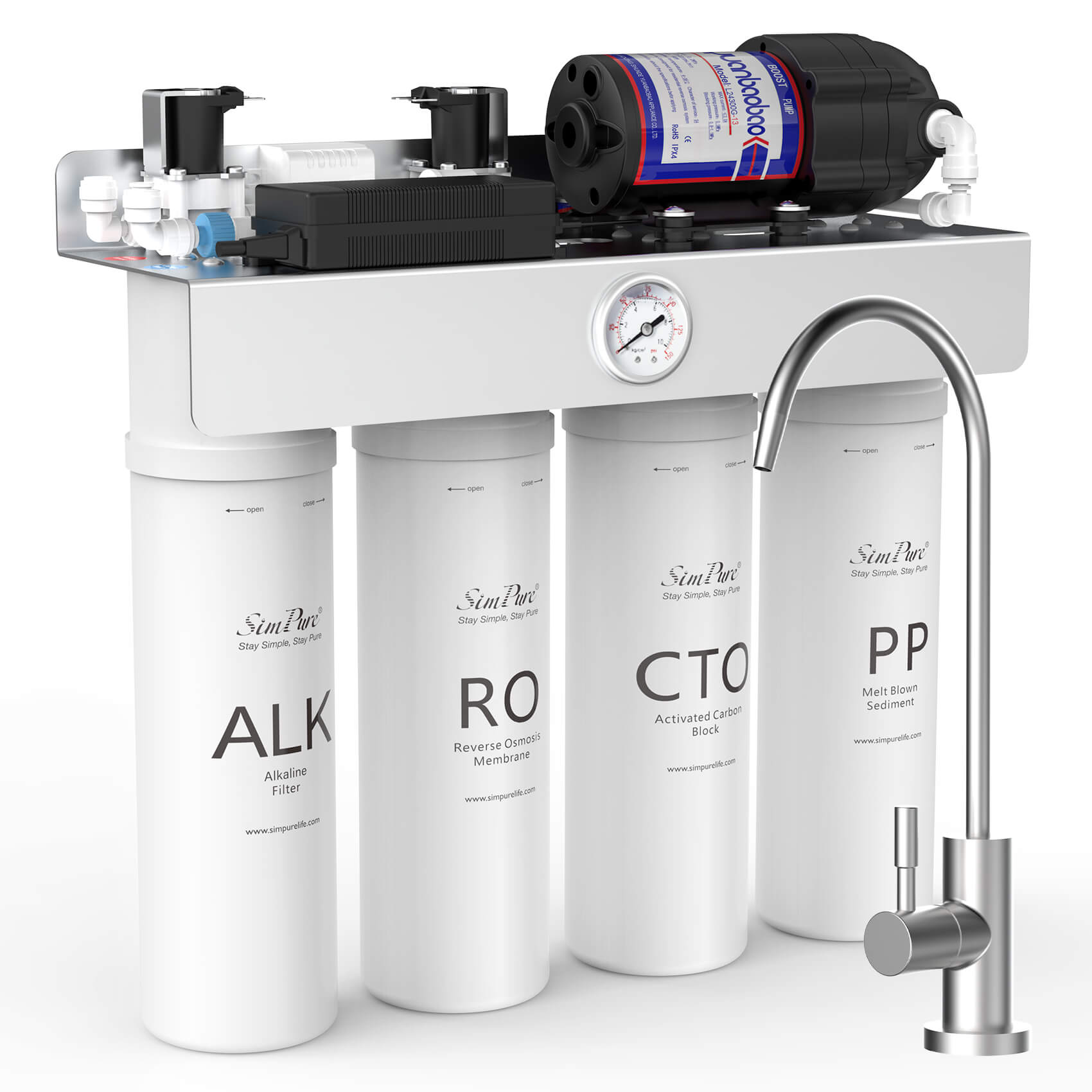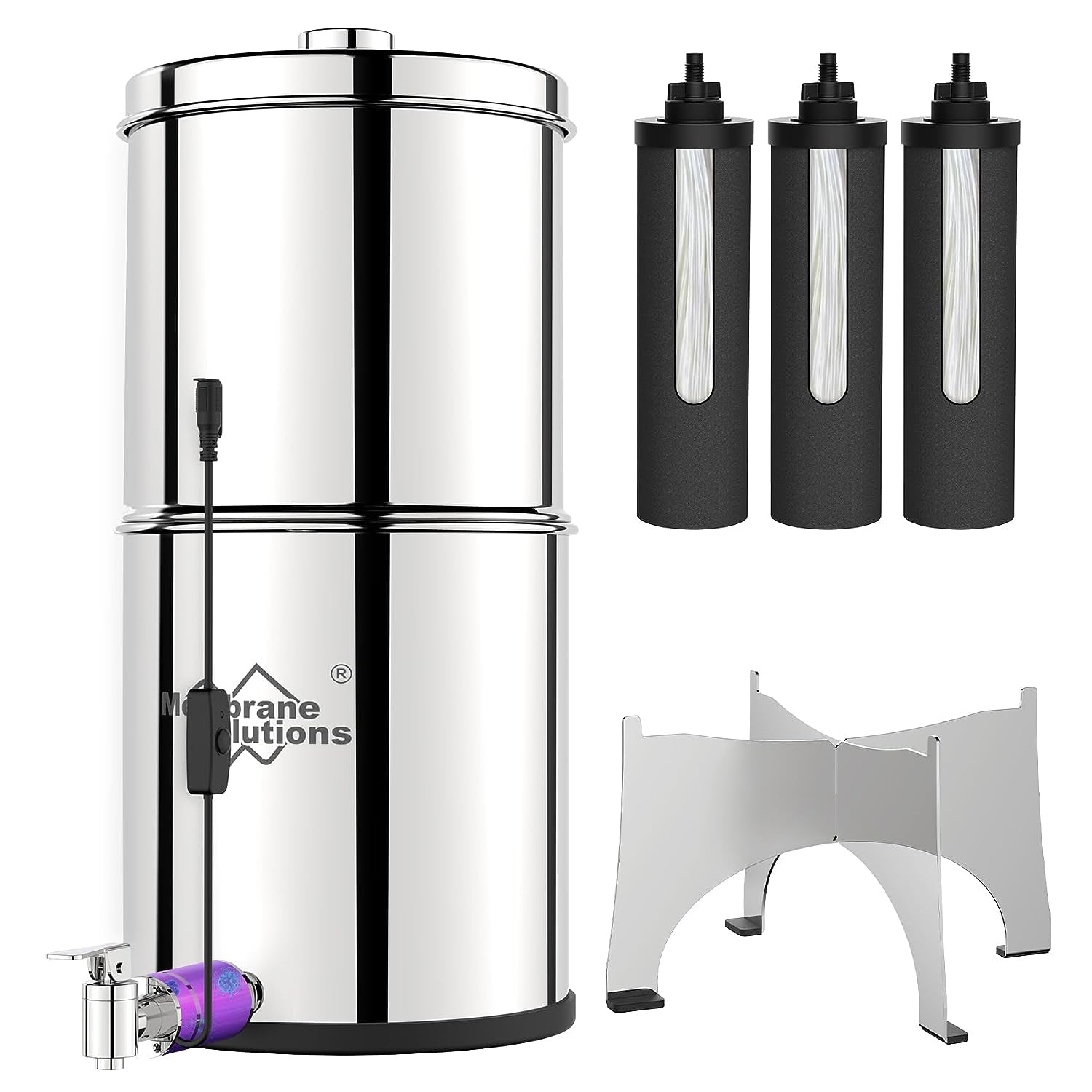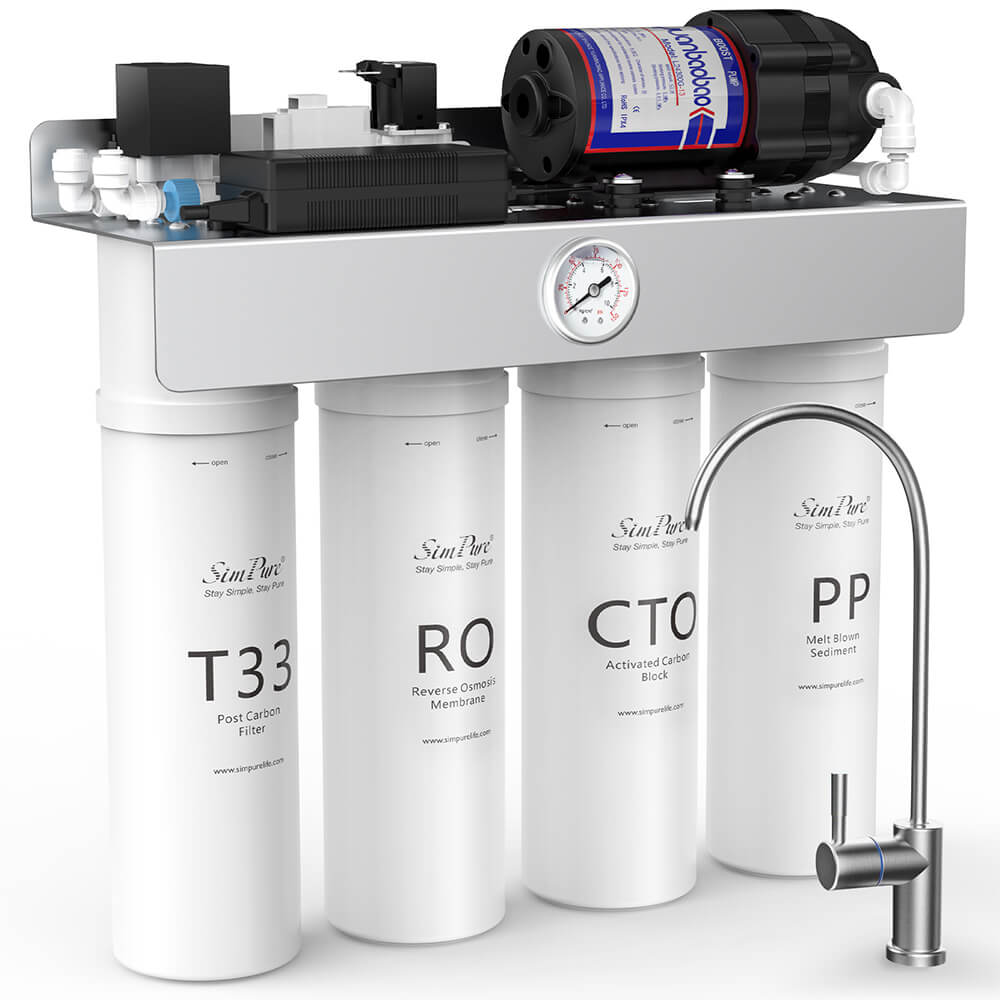Arsenic consumption at high levels presents significant health hazards. Removing arsenic is a crucial step in guaranteeing the safety and purity of drinking water, and this issue can be addressed by investing in a dependable water filtration system that efficiently eliminates arsenic contaminants. Among the array of available methods, reverse osmosis (RO) stands as the best approach for arsenic removal. In this article, we will examine the advantages of reverse osmosis compared to other filtration methods, and we will explore the best countertop RO water filters designed for arsenic removal.
Table of Contents
2. Reverse Osmosis Water Filter Is the Best for Arsenic Removal
3. Pros of Reverse Osmosis Over Other Arsenic Filtration Methods
What Is Arsenic in Water?
Arsenic, a toxic substance, can pose a risk to human health through various routes of exposure, including air, food, water, and soil. Among these, consuming drinking water contaminated with arsenic is the most threatening way to human health. The presence of arsenic in drinking water can be attributed to natural geological processes or human activities, such as groundwater flowing through arsenic-rich rock formations, mining operations, pesticide usage, and industrial processing. According to the United States Geological Survey (USGS): Over 25 states across the country have reported dangerously high levels of arsenic in drinking water wells, potentially affecting around 2.1 million individuals.
Long-term consumption of water with high arsenic levels can lead to chronic arsenic poisoning, resulting in nervous system symptoms(including weakness, insomnia, headache, dizziness, memory loss, etc.) and skin damage (including skin pigmentation, hyperkeratosis, wart-like hyperplasia, and even skin cancer). Research indicates that the onset of these effects is faster at higher arsenic concentrations, but the effect is highly dependent on factors such as age, nutritional status, and overall health. The Environmental Protection Agency (EPA) has set a federal standard of 10 micrograms per liter (μg/L) for arsenic in drinking water*. However, SimPure understands that many individuals seek additional methods to remove arsenic and ensure the utmost safety of their drinking water.

Reverse Osmosis Water Filter Is the Best for Arsenic Removal
Thanks to its unique filtration process, reverse osmosis is exceptionally proficient in eliminating arsenic from water. In reverse osmosis systems, a semipermeable membrane acts as a selective barrier, selectively enabling water molecules to pass through its small pores. As these pores are smaller than arsenic particles, the membrane effectively obstructs and captures them, preventing their entry into the treated water. Consequently, the concentrated arsenic is rinsed away, leaving behind purified water with a significantly diminished arsenic concentration. Renowned for its efficacy in removing various contaminants, including arsenic, reverse osmosis systems have emerged as one of the most dependable methods for ensuring safe drinking water.
Pros of Reverse Osmosis Over Other Arsenic Filtration Methods
Precipitation:
The precipitation method relies on a chemical reaction to convert arsenic into an insoluble form, resulting in the production of substantial sludge during removal. In contrast, reverse osmosis physically obstructs and eliminates arsenic particles, offering a more dependable process without the requirement of additional chemicals.
Adsorption:
Adsorption methods, such as activated alumina, utilize specific media or surfaces to attract and bind arsenic particles. However, these methods are susceptible to water pH variations, and the adsorbent materials can become saturated, necessitating frequent replacement or regeneration. In contrast, reverse osmosis employs a physical barrier to remove arsenic, ensuring consistent performance over an extended period.
Ion Exchange:
Ion exchange methods, involving the exchange of ions between arsenic in water and a resin bed, prove effective in arsenic removal. However, the method necessitates frequent regeneration and may face limitations in the presence of high levels of competing ions. On the other hand, reverse osmosis remains unaffected by competing ions and eliminates the need for frequent replacement.
Biological Method:
Biological methods utilize microorganisms to convert arsenic into less harmful forms or remove it through microbial activity. However, these methods can be influenced by factors like temperature, pH, and nutrient conditions. In contrast, reverse osmosis is a physical filtration process that does not depend on biological factors.
In addition to the aforementioned comparisons, reverse osmosis is also the simplest and most convenient method for individuals to filter their drinking water at home. This can be effortlessly accomplished by installing a water filter equipped with a reverse osmosis system.
Best RO Water Filter for Arsenic Removal Recommendation
The SimPure Y7P countertop reverse osmosis water filter dispenser is designed to meet the rigorous standards of GB/T 5750.4-2006 and EPA 537, as well as NSF/ANSI 58. Featuring a powerful 3-stage 0.0001μm RO filtration system and UV purification, it effectively eliminates 99.99% of pollutants, including viruses, bacteria, chemicals (such as PFOA/PFOS and pharmaceuticals), heavy metals (like lead and arsenic), chlorine, and TDS (including fluoride and nitrate/nitrite), ensuring clean and safe drinking water for you and your family.
Here's a screenshot of the SGS report showcasing the Y7P's arsenic removal capability. You can also click on the SGS Test Report to access all the comprehensive reports for further details.

The SimPure Y7P countertop reverse osmosis system excels in maximizing water utilization, surpassing others in its class. Unlike conventional under-sink filters, this countertop solution offers flexibility in terms of water source and space, making it suitable for various settings like kitchens, offices, campers, and RVs. Additionally, it comes in different color options, allowing you to choose the appearance that suits your preferences: SimPure Y7P-BW & SimPure Y7P-W

*: https://www.epa.gov/dwreginfo/drinking-water-arsenic-rule-history















